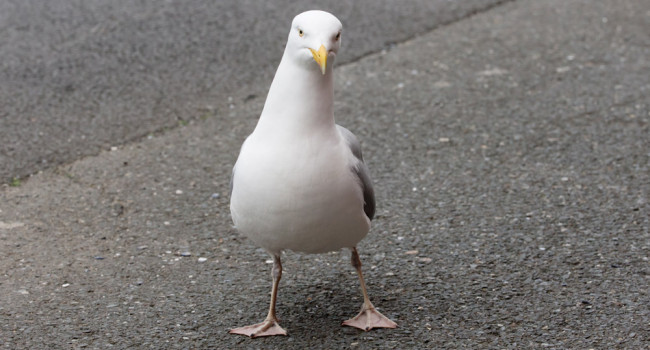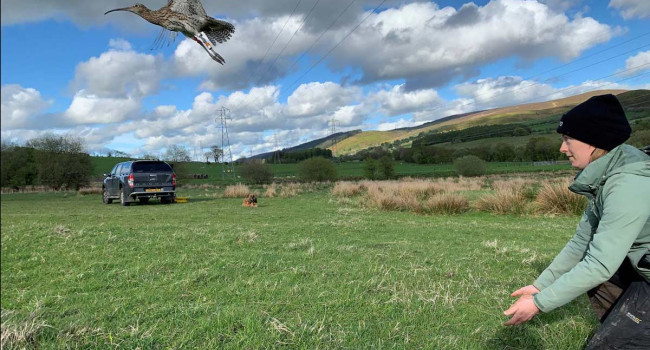12.5 million birds can't be wrong
01 Feb 2012 | No. 2012-06
Every year around 12.5 million waterbirds spend the winter months in the UK, many coming here from as far away as Greenland and Siberia and at least one individual has been making the trip for forty years.
internationally important numbers of waterbirds
February 2, 2012 is World Wetlands Day, on which the importance of the global network of waterways and wetlands is celebrated. According to the latest Wetland Bird Survey (WeBS) report, compiled by the British Trust for Ornithology (BTO) on behalf of RSPB, JNCC and in association with WWT, the UK has 211 wetland sites that hold internationally important numbers of waterbirds. Two of the most important of these are The Wash, on the coasts of Lincolnshire and Norfolk, which supports almost 400,000 waterbirds each winter, and the Ribble Estuary in Lancashire, where almost a quarter of a million birds can be found.
Some of the birds that come to the UK’s wetlands for a winter holiday have been doing so for many years. The longevity records for some of them make for interesting reading. An Oystercatcher trapped and fitted with a ring on the shores of The Wash was recaught in almost exactly the same place forty years, one month and two days later, and a Greenshank ringed at Farlington Marshes, Hampshire was recaught at the same site sixteen years and three days after it was first released, both becoming the oldest of their kind to be recorded in the UK. For more information, please visit http://app.bto.org/ring/countyrec/results2010/longevity.htm
Chas Holt, WeBS Core Count Organiser at the BTO, commented, “Around 3,000 volunteers take part in monthly counts at wetlands across the country, providing us with the numbers that prove just how important the UK is for wintering waterbirds and ensuring that the sites they use are afforded protection for the future.”
He added, “However, it is starting to look like some of our wintering waterbirds may be in trouble. Numbers of many species are showing distinct declines. Whilst for some species (such as the European White-fronted Goose) this may be due to increased numbers wintering on the continent, for others it is looking like there may be declines across their range internationally. UK declines in ducks such as the Pochard, Velvet Scoter and Red-breasted Merganser are mirrored elsewhere across northern Europe, suggesting potentially serious changes in their environment. Whether this is due to conditions on the Arctic breeding grounds, along their migration flyways, or in their winter quarters, is something that requires urgent investigation.”
Notes for Editors
- World Wetlands Day. 2 February each year is World Wetlands Day. It marks the date of the adoption of the Convention on Wetlands on 2 February 1971, in the Iranian city of Ramsar on the shores of the Caspian Sea. Each year since 1997, government agencies, non-governmental organizations, and groups of citizens at all levels of the community have taken advantage of the opportunity to undertake actions aimed at raising public awareness of wetland values and benefits. For more information please visit here.
- WeBS The Wetland Bird Survey (WeBS) is the scheme which monitors non-breeding waterbirds in the UK. WeBS is organised by the British Trust for Ornithology (BTO) on behalf of RSPB, JNCC and in association with WWT. The principal aims of WeBS are to identify population sizes, determine trends in numbers and distribution and to identify important sites for waterbirds. http://www.bto.org/volunteer-surveys/webs
- Longevity records are compiled by the BTO Ringing Scheme and include all records for Britain and Ireland up to 2010. Please visit http://app.bto.org/ring/countyrec/results2010/longevity.htm for more information.
- The BTO Ringing Scheme is funded by a partnership of the British Trust for Ornithology, the Joint Nature Conservation Committee (on behalf of: Council for Nature Conservation and the Countryside, the Countryside Council for Wales, Natural England and Scottish Natural Heritage), The National Parks and Wildlife Service (Ireland) and the ringers themselves.
- The BTO is the UK’s leading bird research organisation. Over thirty thousand volunteers contribute to the BTO’s surveys. They collect information that forms the basis of conservation action in the UK. The BTO maintains a staff of 100 at its offices in Norfolk, Bangor and Stirling, who analyse and publicise the results of project work. The BTO’s investigations are funded by government, industry and conservation organisations.
Contact Details
Paul Stancliffe
(BTO Press Officer)
Office: 01842 750050 (9am-5.30pm)
Mobile: 07585 440910 (anytime)
Email: paul.stancliffe [at] bto.org
Chas Holt
(WeBS Core Count Organiser)
Office: 01842 750050 (9am-5.30pm)
Email: webs [at] bto.org
Images are available for use alongside this News Release.Please contact images [at] bto.org quoting reference 2012-06






Share this page